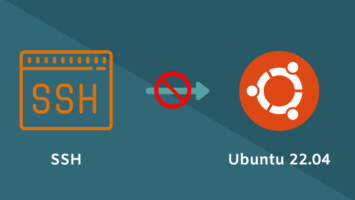
Have you ever lost your phone? Alternatively, realised all the storage on your iCloud has suddenly disappeared? If you have, chances are you’ve felt the shock that accompanies this. Now would be a good time to imagine the losses a business could face if this ever happened.
Cloud computing is a system that manages data storage without the direct involvement of the user. There are some risks attached to this method that can jeopardise a business’ system due to spectacular cloud failures due to bad weather, hacks, or human error. This is what happens when things go wrong in the cloud.
Codespaces

By far the most high profile example of when things go wrong in the cloud was Codespaces. Codespaces offered developers an online platform in which to store their code repositories. Entirely based on Amazon Web Services (AWS), its main control panel credentials became compromised in 2014 by a hacker who held them to ransom. When Codespaces refused to pay, the attacker began deleting everything from their AWS account. Codespaces did regain control of their account, but it was too late everything was gone. The company was forced out of business shortly afterwards.
PayPal
One particular case study focused primarily on PayPal, an online payment service. On August 3, 2009, PayPal’s service suffered an outage for an hour followed by another three and a half hour outage. Over these four and a half hours, an estimate of $32 million in payments was affected.
Nirvanix

Nirvanix was a company that was once the pioneer of cloud storage and it launched a product called Storage Delivery Network in 2007 which included public,
private and hybrid cloud storage capabilities. Forwarding to 2011, they signed an agreement with IBM which declared to use their technology for its cloud storage service. This raised $70 million in venture capital; however, what followed this was beyond their control. In June 2013, IBM bought SoftLayer and established IBM Cloud Services Division. This resulted in the company announcing that their customers had two weeks to retrieve all their data before they shut down. Subsequently, on October 1, 2013, the company filed for bankruptcy.
Supplemental Nutrition Assistance Program
Along with this, the Supplemental Nutrition Assistance Program also fell victim to this failure. They use Electronic Benefit Transfer cards to permit clients to buy food using their government benefits, and Xerox was managing EBT systems for 17 states in their data centres. However, in the last year, Xerox faced a glitch that caused this system to go offline. For hours on end, retailers did not know the amount of balance remaining on the customer’s EBT card and subsequently stopped accepting them. There were also some retailers that did allow them and faced a significant loss because shrewd shoppers filled their carts with “thousands of dollars’ worth of food.” Police were eventually involved and charged some of these shoppers with fraud.
Intuit
 Intuit is financial software known for cloud-based soft products such as TurboTax. However, in 2010 the company’s cloud computing services suffered an outage which lasted up to 36 hours and eliminated the company’s primary cloud data centre. Small business owners were unable to acquire their financial records. Not even a month later, Intuit went through another outage which ultimately decreased brand loyalty.
Intuit is financial software known for cloud-based soft products such as TurboTax. However, in 2010 the company’s cloud computing services suffered an outage which lasted up to 36 hours and eliminated the company’s primary cloud data centre. Small business owners were unable to acquire their financial records. Not even a month later, Intuit went through another outage which ultimately decreased brand loyalty.
iCloud
As an attempt to cyber attack, hackers targeted celebrity accounts on Apple’s iCloud in 2014. The iCloud service stores images taken on the iPhone and other related Apple products and the hackers were successful in obtaining nude pictures of certain actresses such as Jennifer Lawrence. Apple made a public statement saying that the hackers were only able to do this by cracking the iCloud passwords, but this incident permanently left clients feeling sceptical about their particular service.
Salesforce
Salesforce database NA14 experienced hindrance because of a power outage on May 9, 2016. This was settled after the company moved the workload to another cloud data centre. However, the next morning they faced another outage and customers were unable to access their Salesforce accounts for the entire day. The worst part was that the company was not able to restore five hours worth of data from customers which left them extremely dissatisfied.
Conclusion
 Companies such as PayPal, SNAP, Intuit and Salesforce suffered major unplanned outages which caused them to face enormous losses. According to a 2016 Ponemon Institute study, a data centre outage costs businesses an average of $8,851 per minute. Even though outages are beyond the control of a company, there can be some steps to mitigate the consequences. One efficient way is to develop a comprehensive plan such that there are battery and generator backup systems. Companies can also ensure that they have a secondary data centre site to recover disaster as done by Salesforce. Regular testing of data centre infrastructure is also a crucial step to take to prevent losses. This consists of inspections and testing of backup power systems. Along with this, hiring trained staff is also vital to avoid outages due to human error. This is also required if quick decisions are needed in case an accident occurs.
Companies such as PayPal, SNAP, Intuit and Salesforce suffered major unplanned outages which caused them to face enormous losses. According to a 2016 Ponemon Institute study, a data centre outage costs businesses an average of $8,851 per minute. Even though outages are beyond the control of a company, there can be some steps to mitigate the consequences. One efficient way is to develop a comprehensive plan such that there are battery and generator backup systems. Companies can also ensure that they have a secondary data centre site to recover disaster as done by Salesforce. Regular testing of data centre infrastructure is also a crucial step to take to prevent losses. This consists of inspections and testing of backup power systems. Along with this, hiring trained staff is also vital to avoid outages due to human error. This is also required if quick decisions are needed in case an accident occurs.
To prevent unauthorised access such as the incident with Apple’s iCloud, companies should include multi-factor access (MFA) control systems which ensure that only authorised personnel gain entry. Companies that have previously faced great losses or even bankruptcy serve as an example to those that are new and are establishing themselves. This can push them to allocate a higher budget for research and development to overcome any issues that arise.
Do you know of other examples of when things go wrong in the cloud? Let me know via the comments or Twitter. If your business needs help with getting started in on Amazon Web Services, then get in touch today.




Leave a Reply